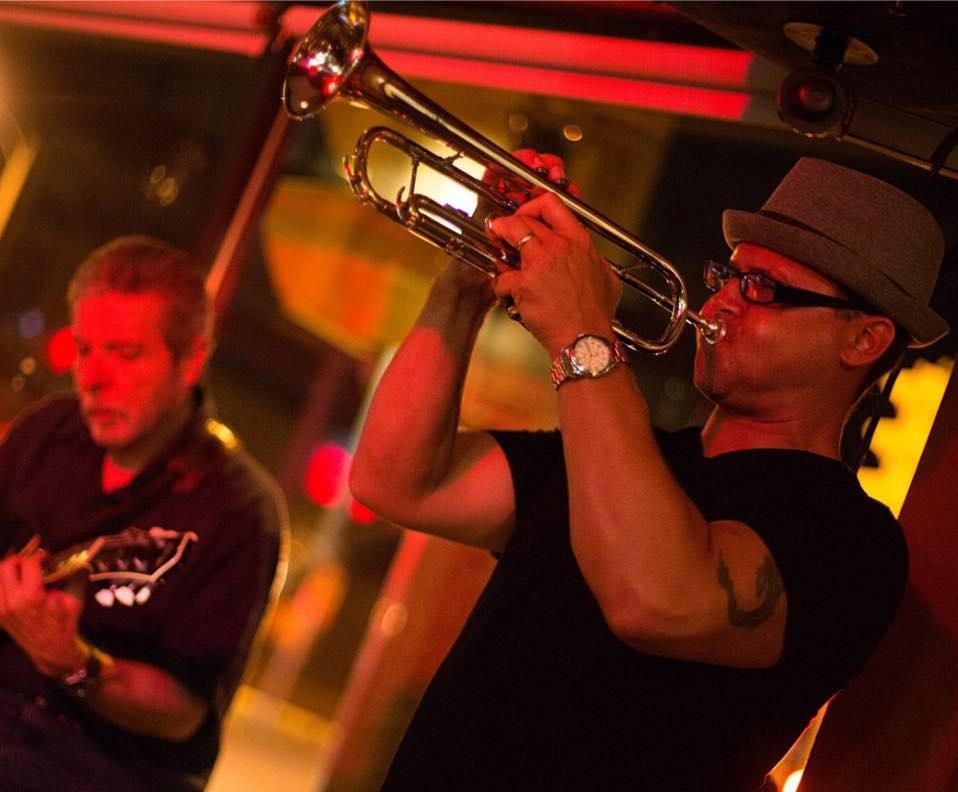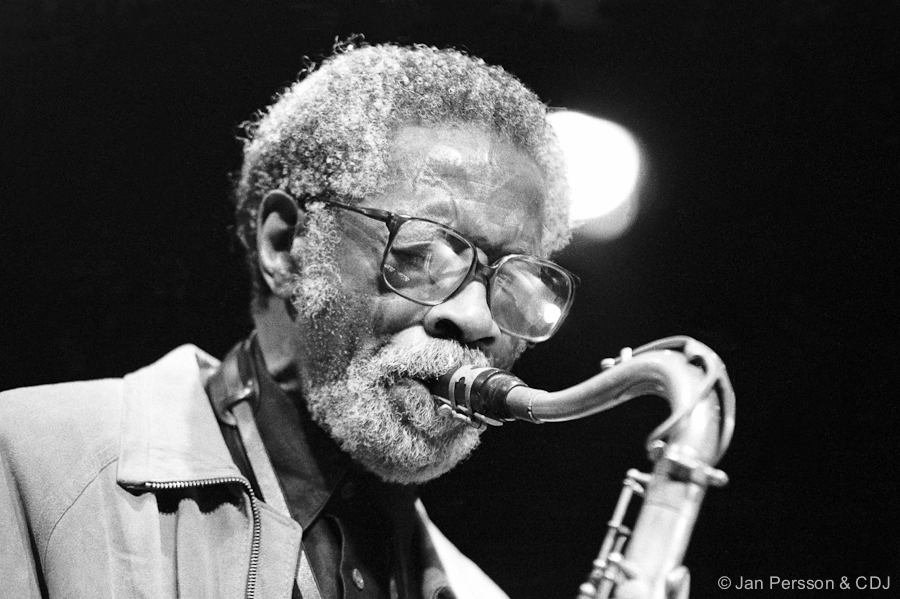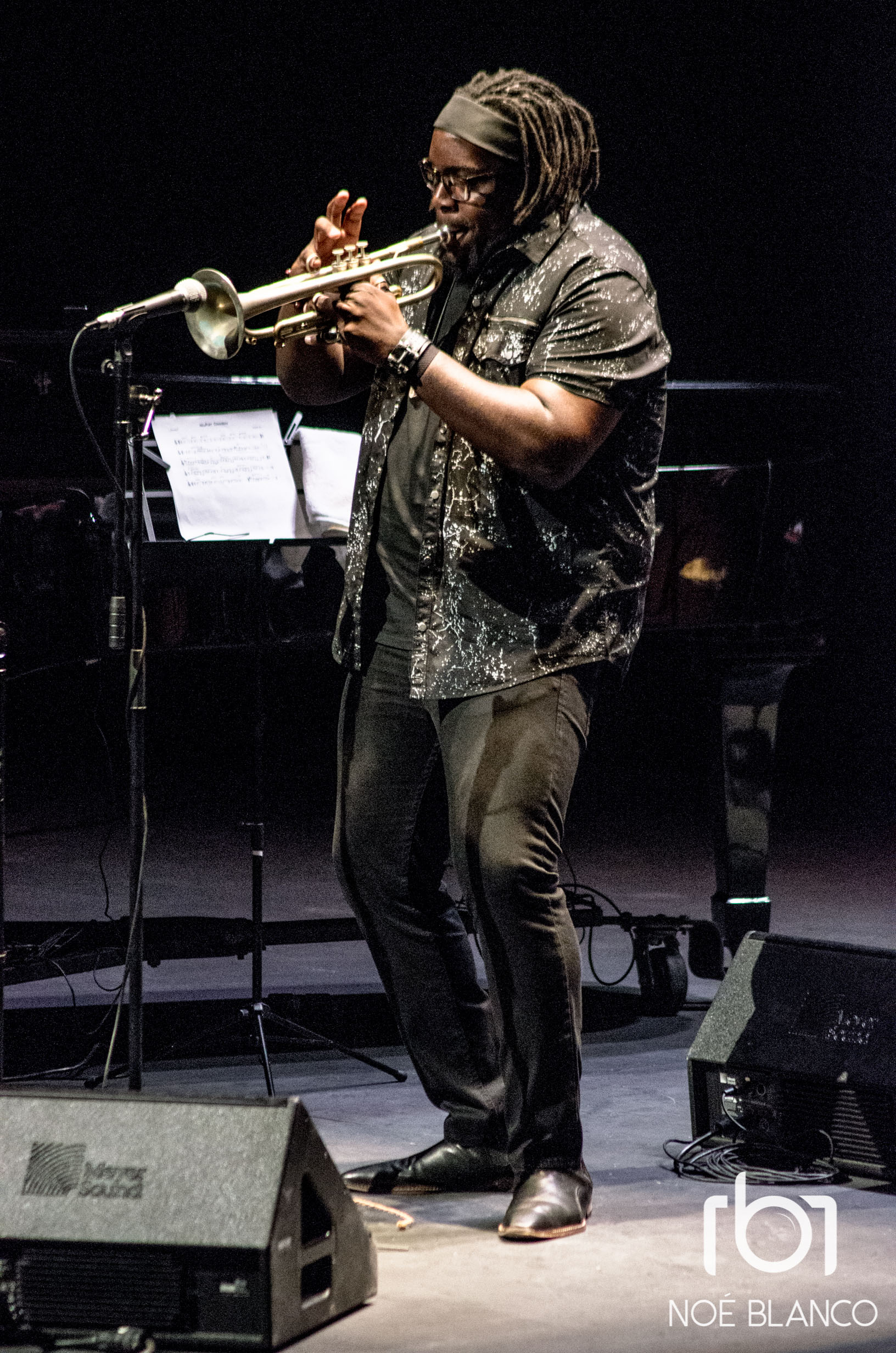
Album cover image courtesy of copertinedvd.org
Anybody who loves, or wants to hear more of, the music that Blue Note records presented through the mid-1960s – as bold extensions of hard bop and more avant-garde freedoms – should pay heed of an event happening at 8 p.m. this Saturday at The Jazz Estate on Murray Avenue in Milwaukee ($13 cover).
A strong and fearless quintet will perform live music from one of saxophonist-composer Joe Henderson’s greatest albums, In N’ Out, recorded on April 10, 1964.
The Jazz Estate’s curator/booker, trumpeter Eric Jacobson, will lead the band. He’s among the region’s two or three best trumpeters, and is chair of brass and woodwinds department in The Wisconsin Conservatory of Music’s jazz studies program. Jacobson has curated Record Session, which has presented live an impressive list of music from classic recordings, by ensembles he puts together for several years at The Estate. It’s a fascinating project for any jazz fan who came of age in the 1960s, or has since discovered the decade’s music, a period rich in classic jazz modernism and innovation.

Trumpeter Eric Jacobson, who organizes the Record Session series at the Jazz Estate, will lead a quintet Saturday performing compositions from Joe Henderson’s 1964 album “In ‘N Out” and other classic albums of his. Courtesy Eric Jacobson facebook page.
The band also includes saxophonist Jason Goldsmith, pianist Mike Kubicki, bassist Jeff Hamann, and drummer Todd Howell. Goldsmith has a big task obviously, but is a highly accomplished musician who teaches saxophone at the West End Conservatory, and has performed with leading jazz musicians, including Ernie Watts, Ed Shaughnessy, James Moody and Slide Hampton.
Jacobson has not revealed the exact playlist but indicated that material from In ‘N Out will be a jumping-off point for a survey of Henderson compositions from various other albums, including Page One, Mode for Joe, Inner Urge and Power to the People. Those were all Blue Note albums. except for the last one, recorded on Milestone as the 1960s cultural Revolution gained power. 1
Here’s a brief Facebook teaser video for the event from Jacobson:
A ghost will shadow the bandstand. Henderson actually performed at The Jazz Estate some years ago, when I was not living in Milwaukee, unfortunately. Although he could play with startling and moving passion, his intelligence always guided his horn’s voice, even at quicksilver tempos. You could really hear the man thinking when he improvised, as logical as it was sometimes startling, ear grabbing and, not infrequently, beautiful.

Joe Henderson, in 1996, as a mature master of modern saxophone and jazz composition. Courtesy janperssoncollection.dk
As In ‘N Out is at the nominal inspiration for this project, I’d like to give you my take on it, as a Blue Note and Joe Henderson classic.
First, as a visual artist, I must note the album cover itself (see top), one of the best examples of Blue Note’s striking, even arresting, trademark graphic art style. Here we see Henderson’s head comprising the dot of the “i” in the title. And the graphic merges the idea of “in” and “out” with a brilliant downward sweep of the second letter of “in”. It conveys superbly, with the arrows, the churning, forward-pushing energy and sharp intellect of this music. As a total image, the album cover title asserts its own sort of muscular beauty. (Graphic artist Reid Miles knew this was a winner, as he signed the design. Look closely for it.) 2
But before a comment on the music specifically, I’ll say that it’s generally understood that the title referred to the musicians striving for a blend of both “inside” playing, which largely adheres to a tune’s chord changes, and playing “outside,” or in a manner free from characteristic bop type changes. The latter realm is something that pianist McCoy Tyner especially facilitates, along with the extraordinarily gifted bassist Richard Davis. Tyner by then had mastered the modal style of jazz that is regular bandleader John Coltrane played.
Modal jazz is influenced by Indian classical music and Coltrane especially used it to flying free of sometimes-constricting complexities of modern jazz changes, which he himself exemplified in his classic tune “Giant Steps.” This recording’s drummer Elvin Jones, also an innovative bandmate of Coltrane’s, frees up the music rhythmically, with his uncanny polyrhythmic style, while still maintaining powerful and swinging tempos.
Now, as for that extraordinary title tune which begins in the album. The head of “In ‘N Out” starts with an off-kilter but captivating phrase, almost as if Henderson is hovering at the fork in the road between going in or out. It then bursts (out/into) a very fast bebopish line that has the intervallic and harmonic nuances that were distinctive and peculiar to Joe Henderson.
The ensuing soloists absolutely burn – Henderson on tenor, pianist McCoy Tyner at the peak of his powers with a cascading solo rippling with his own harmonic innovation of fourth intervals. Trumpeter Kenny Dorham, a naturally lyrical player, slows the tempo for a few moments, then jumps into the speeding vehicle himself, and finally Henderson returns for a very witty closing solo. The tune is breathtaking and whizzes by at 10 minutes and 22 seconds.
It is as if the whole band has taken both forks in the road, in and out, touching down on each and yet flying over them with ever-expanding wings.
I won’t really review the whole album as such, but I will say concisely that the ensuing “Punjab” is also an intriguing tune, but a more spacious and lyrical side of Joe Henderson, which continues on the third tune, “Serenity.” The album shifts to a few hard bop-ish pieces, “Short Story” and “Brown’s Town” both ingenious in her own ways and composed by the date’s trumpeter Kenny Dorham, a greatly under-appreciated musician of the post-bop/hard bop era. “Short Story” is a descending line with a few stately extensions and twists, just like a good short story. And Dorham himself proceeds with an extremely musical and compelling solo.
I’ll conclude by noting that, in ways, this remains an underappreciated album. A few years ago, I chose the SFJAZZ Center in San Francisco as a destination for a desire to take a westward road trip. Specifically we made the big drive to hear the SFJAZZ Collective perform a couple of concerts which would become a recording of Joe Henderson compositions (and originals). Curiously, this world-class ensemble did not perform oe record any of this album’s tunes, though I didn’t hear their third evening of Henderson music, and he was a fairly prolific composer.
Late in his career, Henderson recorded several magisterial albums for Verve records which gained him great popularity and acclaim, as arguably our greatest living tenor saxophonist. He died at 64 on June 30th of 2001 in San Francisco, his home during most of his career, of heart failure, after a long battle with emphysema.
So for me, and I hope many others, Saturday will be a rare opportunity to hear superb Joe Henderson music live, pretty close to the way he recorded it.
The ghost will be listening too, and hopefully nodding with a smile of approval.
_______________
- Eric Jacobson, a highly accomplished but honest musician, says that the band will do all the compositions from In ‘N Out, except the title tune which, he says, they didn’t have time enough to rehearse. As my description of the tune might suggest, it is a technical as well as artistic challenge to master. “But there’s so many great tunes of Joe’s that I want to play, so it’ll be a fun night,” Jacobson says.
- The album cover design compromises function for form in one respect. Pianist McCoy Tyner’s name is reduced to an “etc.” because Reid Miles didn’t have enough room in this layout for his name. Great as he was already, Tyner still had the smallest reputation amongst these musicians. His breakout Blue Note album as a leader, The Real McCoy – with Joe Henderson and Elvin Jones as sidemen – wouldn’t be released until April, 1967, three years later.
Like this:
Like Loading...






